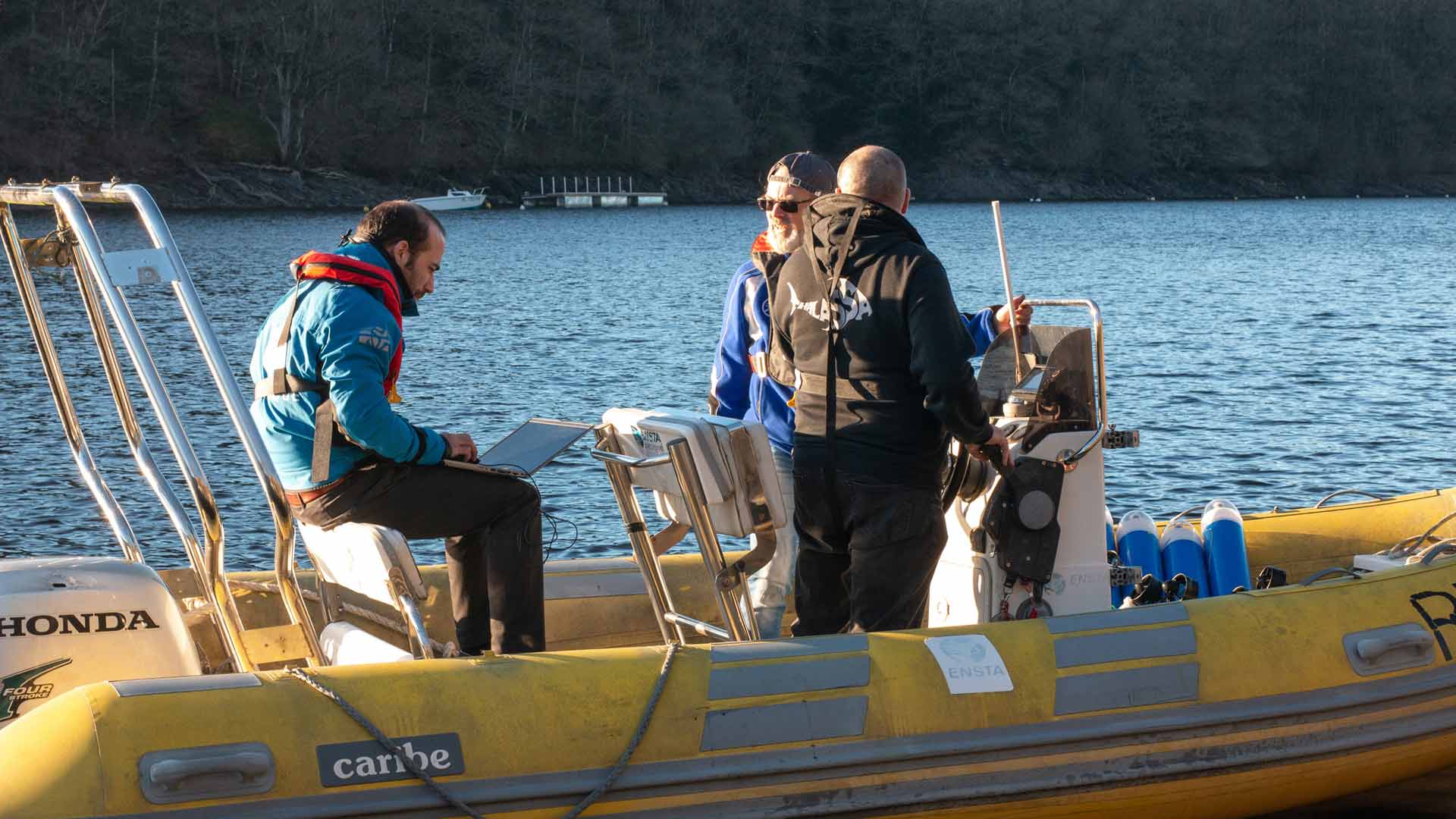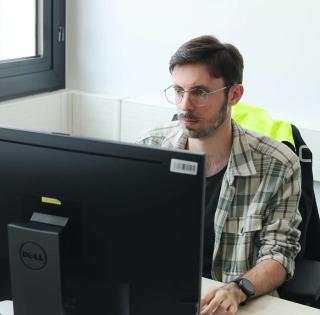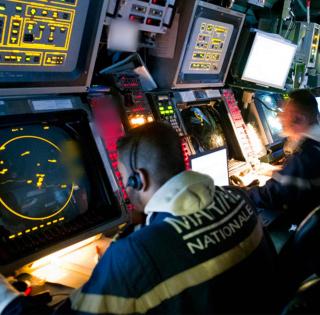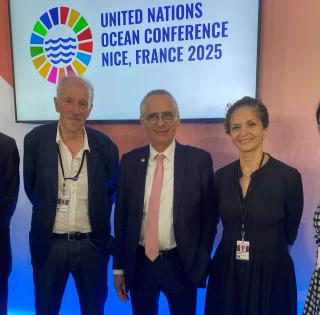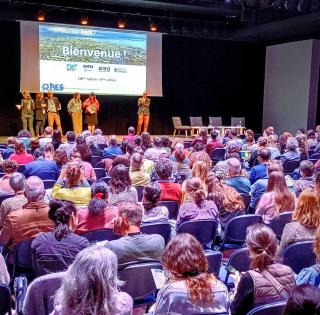
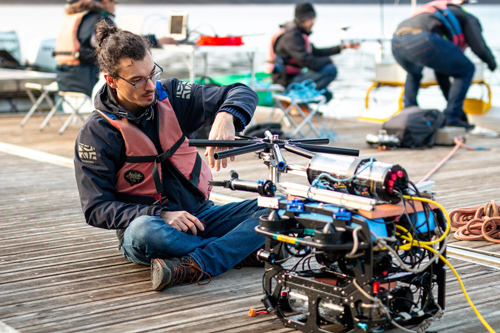
This autonomy and mission success goal has given rise to a number of theses that have enabled us to gradually overcome the many technical limitations in this field, associated with the difficulties of observation, communication and geolocation in the underwater environment.
Scientific and methodological advances are confirmed by trials using surface or underwater marine robots, tested at sea (roadstead of Brest), in freshwater (Lake Guerlédan) and, in a few months' time, at ENSTA Bretagne, in the new basin² for autonomous robotics, the construction of which has just begun.
Prof. Luc Jaulin :
The benefits of applications are huge. Whether to observe an unfamiliar area (the deep sea, for example), monitor a sensitive site, search for wreckage, perform rescue at sea or intervene in dangerous areas, marine drones take over whenever human intervention reaches its limits (such as tasks that are too repetitive, too time-consuming, too costly or too dangerous).
The autonomy of marine and underwater robots is one of the keys to successfully carrying out such exploration missions, over long distances or at great depths. Our team tackles the complex issue of robot autonomy using mathematical methods to program robots and solve application situations. Our scientific results are mostly public and have been fueling innovation in this field for around 20 years, with the support of numerous public and industrial partners.
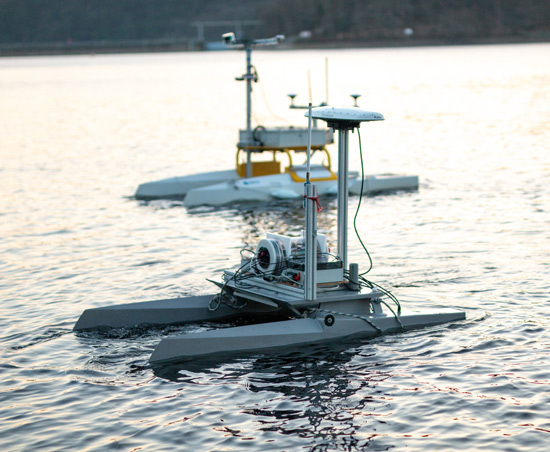
In 2024, the team will be provided with a unique experimental facility in France, comprising a swarm of 6-meter and 3-meter boat drones, capable of testing coordination, traffic insertion and docking algorithms in a real environment, while ensuring the robots' cybersecurity [RACAM research project included in the 21-27 State-Region plan contract].
At the same time, work on autonomous floats is continuing to expand, with a project to develop and test a distributed acoustic antenna at great depth, following on from theoretical developments initiated a few years ago [France 2030 Bpifrance ID-GF and DGA Proteus projects].
¹ Organized under the patronage of Mr. Hervé Berville, Secretary of State for the Sea, this national seminar was organized by La Place Stratégique, a driver for the development of companies in strategic sovereignty fields, in particular defense and security, Brest métropole, the Pôle Mer Bretagne Atlantique and the World Sea Campus.
² Also see the "Transforming the campus (...) construction of a new unit for mobile robotics" article
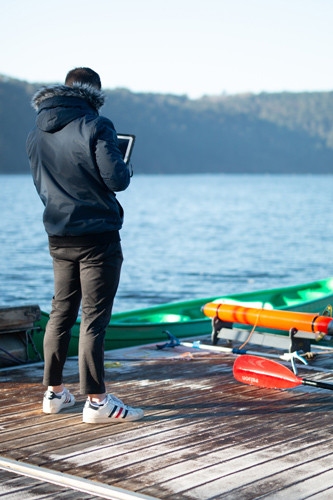
Just some of the scientific goals tackled by PhD students in the ROBEX team this year are given below.
- Making a torpedo robot capable of completing a course and returning to its starting point without getting lost in a completely open environment devoid of obstacles (thesis by Quentin Brateau)
- Enabling fast, low-energy calculation of uncertainties in autonomous robotics (thesis by Pierre Filiol)
- Being able to ensure the success of a robotic mission by better controlling uncertainties, even in worst case situations. The aim is to characterize and model uncertainties and apply these new testing methods to a marine robot, such as the Helios catamaran (thesis by Maël Godard, started in 2023)
- Demonstrating the stability of a cyber-physical system in a fleet of several autonomous underwater robots (thesis by Morgan Louédec, started in 2021)
- Carrying out an autonomous underwater robotic mission without getting lost using a terrain map (thesis by Damien Esnault, DGA Naval Systems, started in 2023)
Some theses are jointly supervised by Eric Goubault and Sylvie Putot of LIX (École Polytechnique's Computer Science Laboratory), for example:
- Finding computational methods for proving that a group of robots can cooperate without misunderstanding or mission failure, and demonstrating that, by working together, certain properties will always be satisfied, such as staying together or detecting an intruder (thesis by Bernardo Hummes Flores, started in 2022)
- Characterizing the topology of explored areas to identify holes (unexplored areas) and enabling autonomous navigation of underwater robots (thesis by Maria-Luiza Coasta-Vianna, started in 2019)
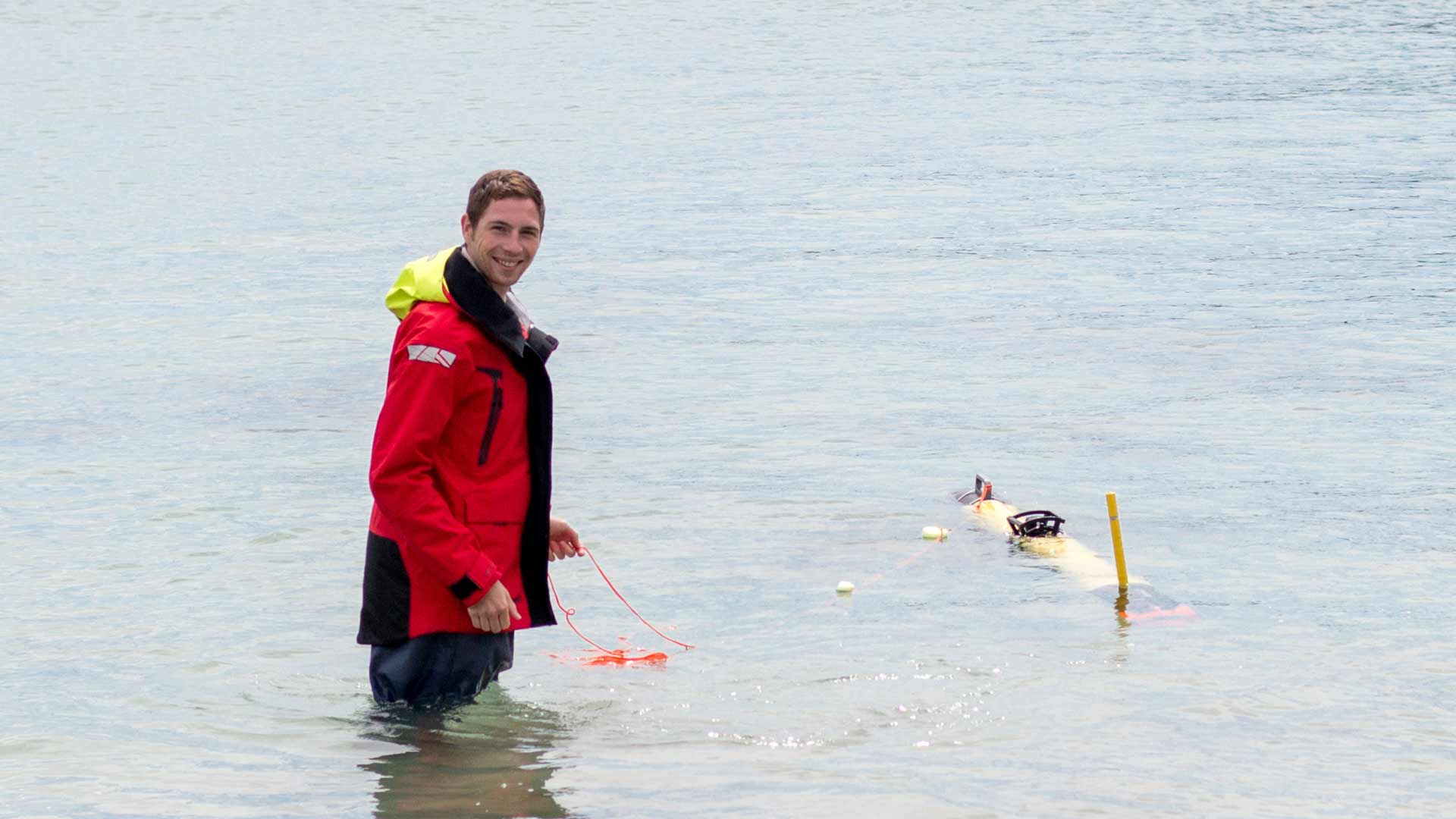
On a more ad hoc basis, peripheral subjects are also dealt with by the ROBEX team, such as:
- Precisely characterizing the acoustic backscatter index to improve seabed identification (thesis by Irène Mopin with the DGA and the University of Bath, defended in 2023)
- Enabling autonomous mobile robots to interact with humans, and recognize and answer their questions (thesis by Rémi Rigal with Orange, defended in 2023)
- Cooperating with Thales on communications at sea (thesis by Nathan Fourniol)
- Providing computational tools for testing the satisfactory driving autonomy of a motor vehicle (thesis by Aaronkumar Ehambram, jointly supervised with Leibniz University Hannover)
| Lionel Lapierre, new HDR professor in underwater robotics
Lionel Lapierre previously worked at the Laboratoire d’Informatique, de Robotique et de Microélectronique de Montpellier (Laboratory of Computer Science, Robotics and Microelectronics of Montpellier or LIRMM), at the University of Montpellier. When he joined the Robex team in Brest, he brought with him a new and complementary subject, the exploration of karstic networks. His aim is to set up a system for exploring and mapping these submerged caves using one or more autonomous robots, and thus measure these freshwater reserves on limestone plateaus. |






